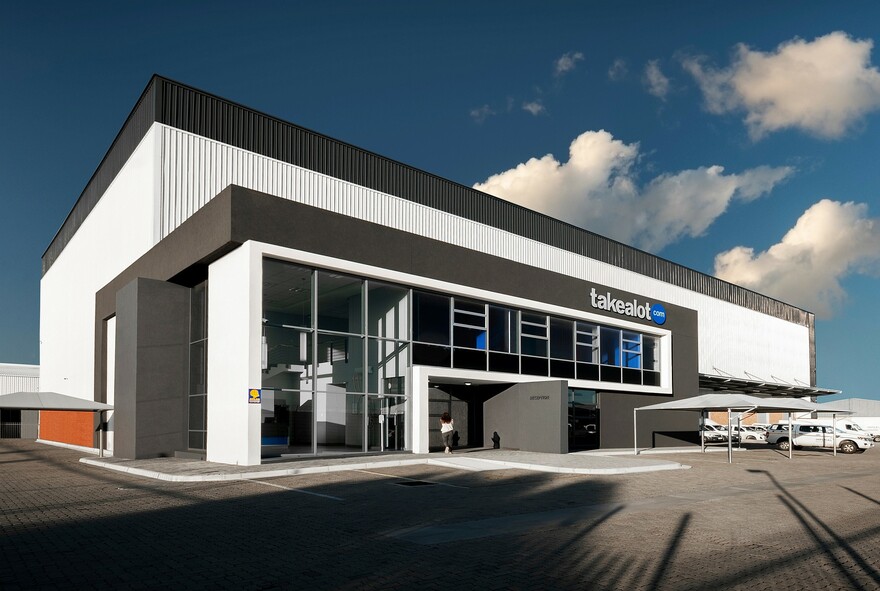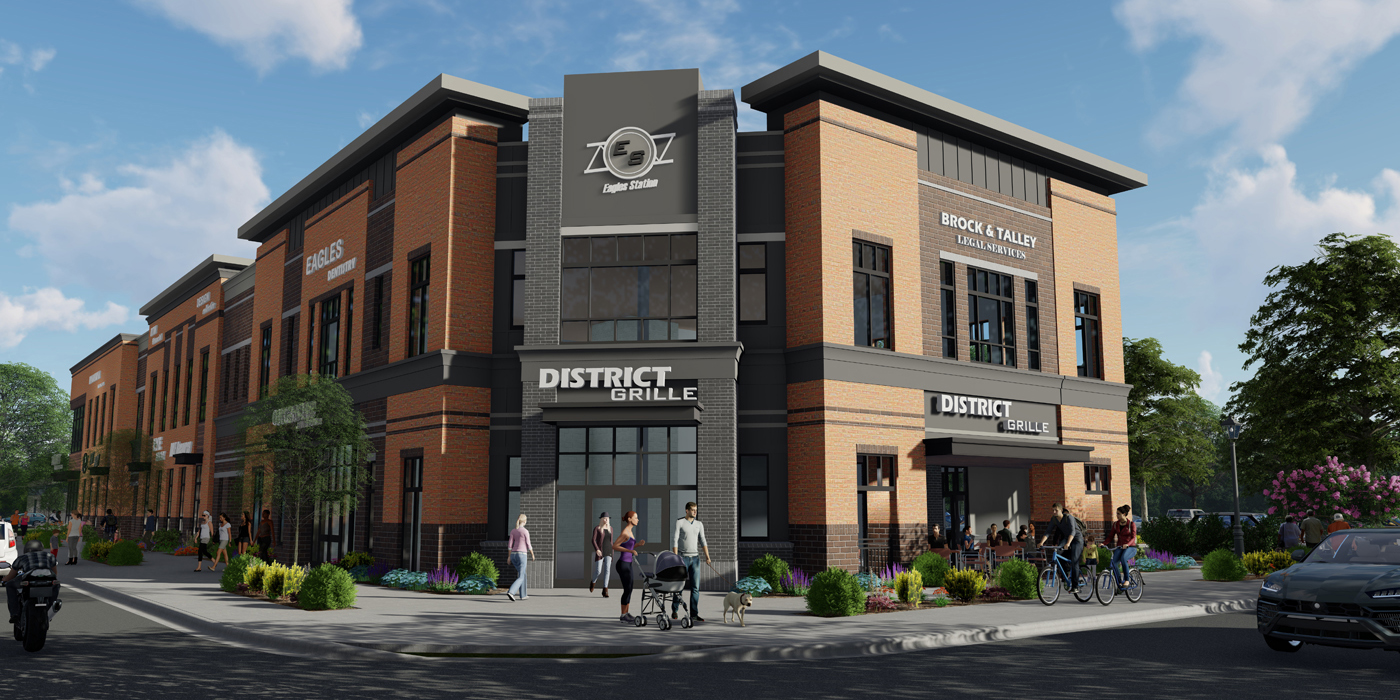Exactly How Commercial Architects Can Transform Your Service Room With Specialist Layout Providers
Commercial architects play an important role in improving service settings. Their expertise in layout can substantially improve both functionality and aesthetic appeals. By producing areas that show a brand name's identification, they improve functional effectiveness and employee complete satisfaction. The impact of their work extends beyond simple appearance. Understanding the subtleties of partnership and sustainability can result in transformative results. What details aspects make these improvements successful?
Understanding the Function of Commercial Architects
Commercial architects play an essential function in forming company environments that are both useful and aesthetically pleasing. They specialize in creating rooms customized to the specific needs of companies, ensuring that every square foot is utilized effectively. These experts incorporate aspects such as spatial format, illumination, and products to enhance efficiency and staff member well-being. By teaming up with clients, commercial architects collect understandings right into functional requirements and brand identity, converting these into ingenious designs.Additionally, they browse complex building codes and zoning legislations, making certain compliance while making the most of style possibility. Their competence expands to sustainability practices, promoting energy performance and eco-friendly products in their tasks. Via their creative vision and technical understanding, commercial architects not only create appealing rooms yet likewise foster atmospheres that advertise cooperation and growth. Ultimately, their contributions substantially influence the general success and picture of a company.
Benefits of Specialist Layout Solutions

Tailoring Spaces to Your Brand Identification
Customizing areas to a brand name's identity is essential for conveying its core worths and objective. Commercial architects play an essential duty in boosting an organization's aesthetic identification via thoughtful layout choices. By aligning building components with brand name concepts, business can produce atmospheres that resonate with customers and staff members alike.
Reflecting Brand Worths
Just how can a properly designed room embody a company's core worths? Commercial architects play a crucial role in forming settings that reverberate with a brand name's identity. By incorporating aspects such as color pattern, products, and designs, they produce rooms that mirror the essence of the business. A technology firm may decide for open designs and modern home furnishings to convey technology and partnership, while a high-end brand name might choose classy surfaces and intimate areas to evoke exclusivity and class. Thoughtful design not just enhances capability but additionally fosters a solid connection in between employees, customers, and the brand name. Eventually, a well-crafted setting functions as a substantial representation of a business's mission and vision, strengthening its values at every touchpoint.
Enhancing Aesthetic Identification
What aspects can properly elevate a brand name's aesthetic identity within a business space? Commercial architects play a crucial role in integrating layout attributes that resonate with a firm's ethos. Color plans, typography, and products can be strategically chosen to show brand name worths while guaranteeing visual appeal. Furthermore, integrating logo designs and brand name images into the style can develop a natural visual story. Illumination layout can even more improve the environment, leading consumer understandings and experiences (commercial architects). Layout and furnishings choices need to straighten with the brand name's character, whether it's contemporary, standard, or innovative. Eventually, a properly designed business room not just draws in customers however additionally strengthens brand recognition, developing a long lasting impression that cultivates commitment and involvement
Enhancing Performance and Efficiency
Enhancing performance and efficiency in business rooms includes enhancing space usage and developing workflows that streamline procedures. Architects focus on creating layouts that minimize thrown away room while promoting smooth adjustments in between tasks. This technique not only improves performance however likewise adds to an extra cohesive workplace.
Enhancing Space Use
Efficient space application is a critical element in industrial architecture, where the style needs to stabilize looks with functionality (commercial architects). Architects use numerous techniques to make the most of available square video footage while making certain that each area offers an unique objective. By assessing process, website traffic patterns, and individual demands, architects can produce formats that improve both staff member performance and customer experience. Multi-functional spaces, versatile furnishings arrangements, and enhanced storage space solutions are crucial parts in achieving this objective. Additionally, incorporating natural light and open spaces promotes an extra welcoming atmosphere, more elevating the utility of the atmosphere. Inevitably, efficient room utilization not just improves operational performance but likewise contributes favorably to the overall brand photo, making it a necessary consideration in commercial style
Structured Operations Design
How can a well-designed operations change a commercial space into a hub of efficiency? Structured operations style focuses on enhancing the physical layout and functional processes within a service setting. By strategically organizing workstations, meeting areas, and resources, architects can get rid of unnecessary motion and improve cooperation. This thoughtful design decreases diversions and facilitates communication, official source allowing employees to concentrate on their tasks more efficiently. In addition, integrating technology into the operations can better automate procedures, lowering time invested on routine tasks. Consequently, businesses experience improved staff member spirits and boosted outcome, creating a dynamic atmosphere that fosters technology. Inevitably, buying streamlined operations style not only boosts capability however also places an industrial space for lasting growth and success.
Cultivating Cooperation Through Design
Contemporary work spaces often focus on individual efficiency, the layout of commercial areas increasingly emphasizes partnership as an essential motorist of advancement and team communication. Architects play an important duty in creating atmospheres that foster communication among employees. Open designs, multifunctional rooms, and strategically positioned common locations encourage spontaneous discussions and conceptualizing sessions.Incorporating elements such as movable furniture and versatile conference room allows teams web to reconfigure rooms based upon their joint needs. Furthermore, integrating innovation, like interactive whiteboards and video conferencing devices, improves the capacity to interact efficiently, despite location.Natural light and biophilic style components additionally contribute to an extra welcoming atmosphere, promoting comfort and wellness, which are crucial for productive teamwork. By focusing on these elements, industrial architects can produce dynamic settings that not just boost collaboration but additionally drive total business success.
Sustainable Design Practices in Commercial Architecture

Case Studies: Effective Transformations by Commercial Architects
The application of sustainable style techniques has not just reshaped the technique to commercial architecture but has actually likewise led to impressive transformations in numerous service rooms. One notable case is the redesign of a tech company's headquarters, where architects integrated natural light and environment-friendly wall surfaces, resulting in improved employee health and productivity. This transformation decreased energy costs by 30% and enhanced the firm's public image.In an additional circumstances, a view it now store underwent a complete overhaul, utilizing reclaimed products and energy-efficient systems. This not just brought in eco-conscious consumers however also enhanced foot traffic by 25%. A 3rd instance entailed a company workplace that welcomed an open-plan format with flexible offices, promoting partnership among groups. The architects' emphasis on producing a vivid and adaptable environment considerably enhanced staff member satisfaction. These instance research studies exemplify how business architects can create impactful rooms that line up with company goals and sustainability initiatives.
Often Asked Questions
Just How Much Do Commercial Design Services Usually Cost?
The price of industrial design solutions differs widely, typically varying from $100 to $250 per hour. Variables affecting pricing include project intricacy, place, and the designer's experience, making it important for businesses to get in-depth price quotes.
What Sorts Of Services Benefit Most From Commercial Architects?
Different businesses, including retail, hospitality, and company offices, greatly gain from commercial architects. These experts boost functionality, aesthetics, and brand identification, guaranteeing areas are maximized for customer engagement and staff member productivity, eventually cultivating business development.
How much time Does a Business Style Job Normally Take?
The timeline for an industrial design task normally varies from numerous weeks to several months. Variables influencing duration include project complexity, regulative authorizations, and cooperation amongst stakeholders, every one of which can influence total completion time.
Can I Hire an Industrial Designer for Improvements Just?
Yes, hiring a business architect for renovations is feasible. Numerous architects specialize in restoration jobs, supplying proficiency in maximizing existing spaces while adhering to policies and boosting capability, aesthetics, and overall worth of the company environment.
What Credentials Should I Look for in a Business Engineer?
